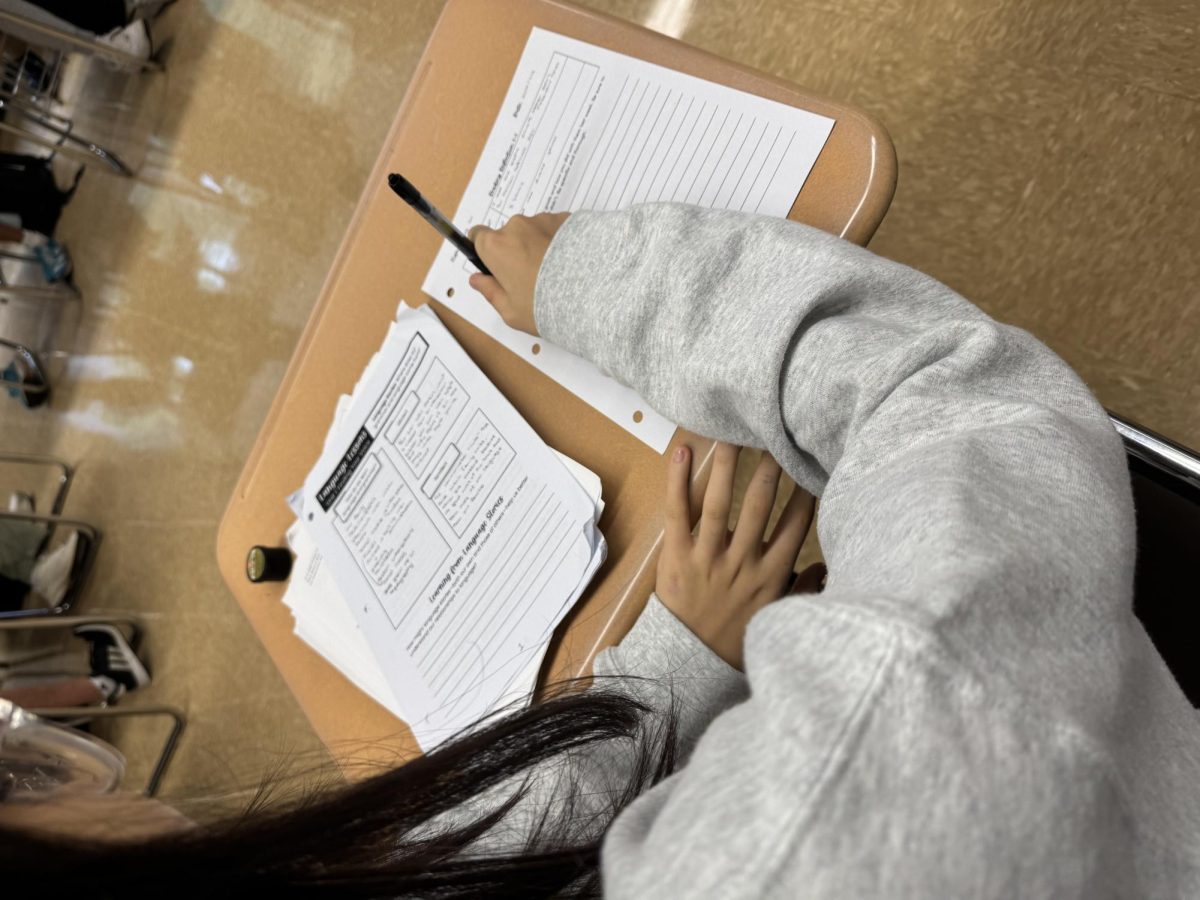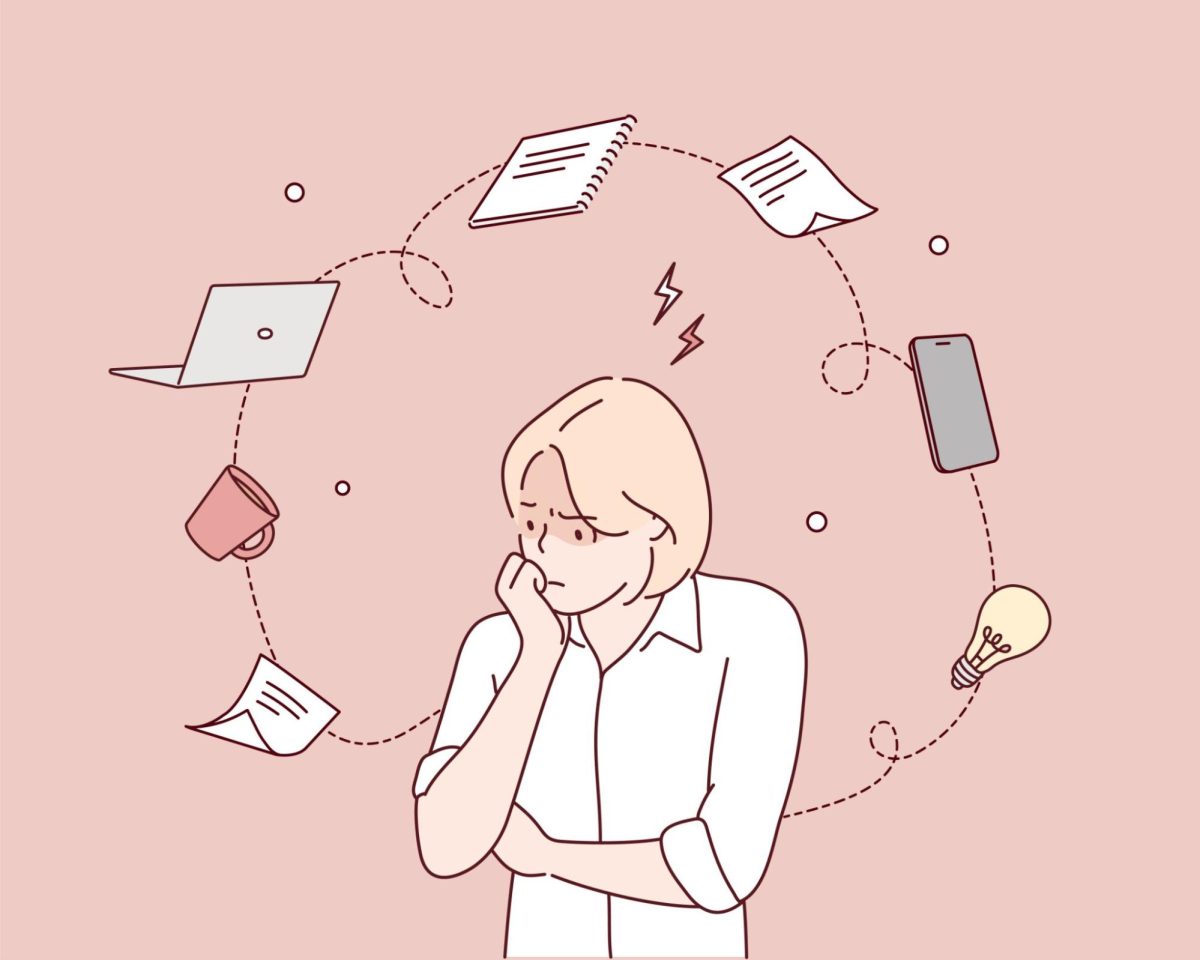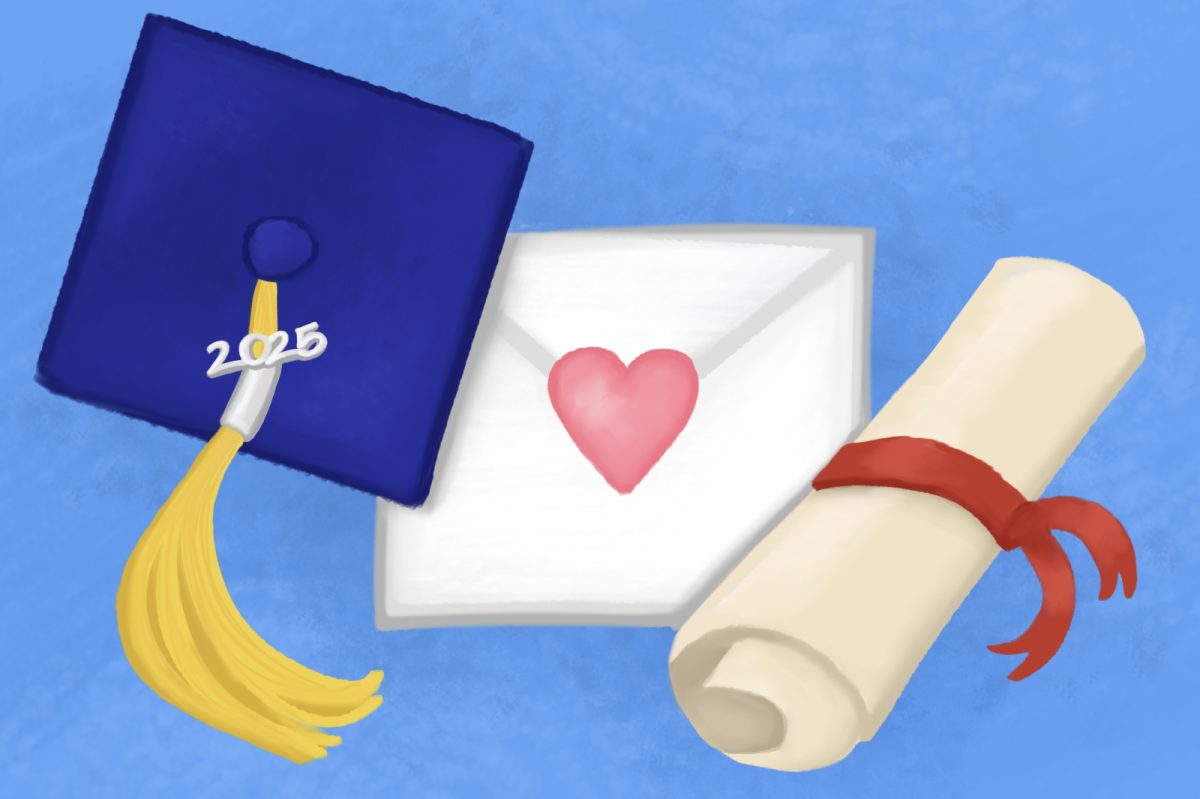As the bell rings, I habitually check my phone before trading it for my iPad. I import my handout to Notability, and my mind slips away as my teacher drifts into a tangent… I forgot to do my homework that’s due next period! I scramble to finish it, the teacher’s lecture flying over my head. The bell rings. I enter my AP Language classroom, quickly flipping through my phone, iPad already on my desk. Then, my teacher says something unusual: “Put away your iPads and come get this handout.”
Many teachers this year are using paper in their classes. Mrs. Fran Tria, a US History teacher, requires her students to take paper notes in and out of class, and Mr. Randy Appell, an AP Environmental Sciences teacher, offers his students an optional test grade if they complete Cornell Notes for each unit. But why are teachers shifting away from iPads? All the teachers I spoke with had the same two answers: Paper reduces distractions and improves students’ ability to process information.
Rather than lock students into one app or look over their shoulders on Apple Classroom, some teachers have decided to handle distractions by removing the temptation altogether. “Students benefit when they have paper in front of them and use their pencil to copy down notes. Their concentration, focus, and attentiveness is much more engaged when they’re off their iPads. And they have reported that to me,” Mrs. Tria said.
Paper notes also increase cognition, or the process of acquiring and understanding knowledge. The physical movement of writing notes creates stronger neural pathways in the two fundamental brain regions for memory and learning. A study measuring electrical activity (or an EEG test) of 36 university students found that brain connectivity patterns—pathways that regions of the brain use to communicate—were more elaborate when the students were handwriting compared to when they were typing. Additionally, handwriting notes requires students to focus on the lesson. Rather than scribbling everything said in class, students must listen closely and paraphrase information into their own words.
Well, couldn’t you just handwrite on your iPad? Yes. You can. However, a 2021 international study demonstrated that writing on paper has a stronger effect on memory retrieval and subject recognition.
Admittedly, iPads have some advantages in the classroom: they make distributing handouts easier, give students instant feedback, and weigh practically nothing. Sending material to students or sharing notes with a friend can be done in the blink of an eye. The Department of Education found that students who received instant feedback after selecting the incorrect answer on their homework assignments achieved higher scores on tests than those who received delayed feedback. Having access to resources like Khan Academy and EdPuzzle for extra practice helps students improve. Most importantly, iPads weigh so little and can carry over four years’ worth of materials. While some teachers still give physical textbooks, many have an ebook version that students can use to avoid lugging an extra heavy bag everywhere.
Saving and finding old files is also simpler digitally. Since paper often occupies too much space, loose leaf is often tossed after the school year is over. iPads remove this wasteful habit with digital folders and files that can be deleted without throwing old things away. With an iPad’s light weight and intuitive organizational features, it’s obvious that many students prefer using iPads.
And, of course, the biggest benefit of digital learning is the reduced environmental impact. However, learning is a give and take, as Mr. Appell says. “I’ll sacrifice slight environmental danger for exponential growth in learning.” Even if South High only used iPads for everything, paper would still be mass-produced to the same extent that it is now. And though people say that learning digitally lessens our impact on the environment, discarded iPads can take multiple decades to fully decompose, which will harm the environment to the same or higher degree than using more paper would.
When iPads were first introduced to me in elementary school, they stayed in a locked cabinet, only used for large projects. Now, we keep our iPads with us over long breaks, and even minuscule assignments are given through Google Classroom. Even standardized testing, like the AP tests, will be digital this year—and many students are unhappy about it. We cannot ignore the fact that paper has proven to be the better medium for learning. Perhaps in the face of all these changes, reverting to paper is what we need.









